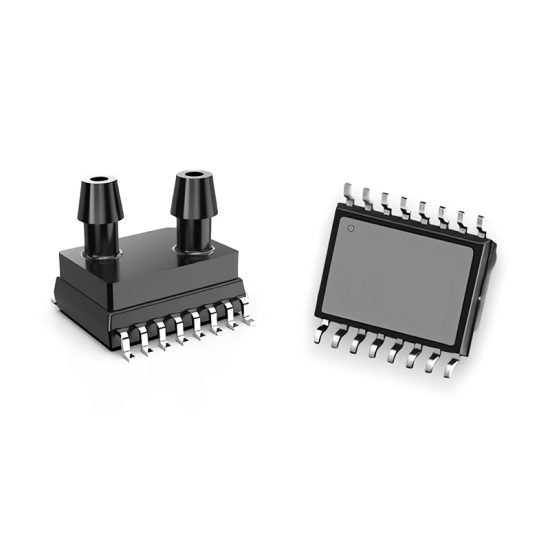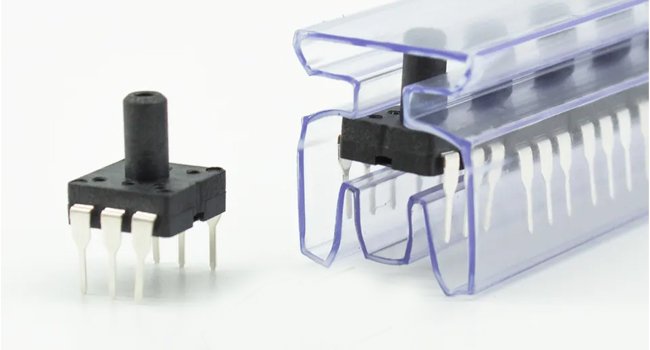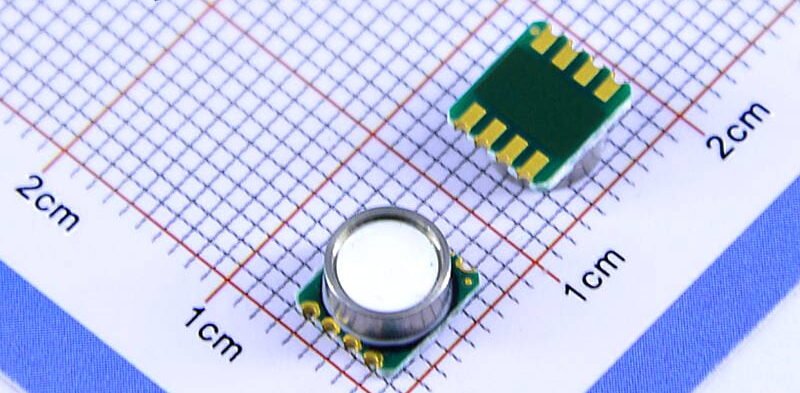Ventilator pressure sensors (including piezoresistive and piezoelectric types) measure airway pressure in real time (cmH₂O) and work with flow sensors to form a closed-loop control. Sensors must offer fast response, adequate range, temperature and humidity compensation and redundant design, so they can be used across ICU, neonatal, transport and home sleep ventilator scenarios, ensuring peak pressure, PEEP and trigger sensitivity remain within safe limits.
Katalog
1. Dynamic control of ventilation pressure
Ensuring accuracy from analogue to digital
During inspiration, the sensor must sample airway pressure in real time and drive adjustments to delivered flow so peak pressure stays below safety thresholds (for example 30 cmH₂O) to avoid barotrauma; at end-expiration it must maintain set PEEP (for example 5–15 cmH₂O) to prevent alveolar collapse and improve oxygenation. The sensor should cover a range from −20 to 120 cmH₂O, retain linearity with low non-linearity error, and have a response time under 10 ms to support both high-frequency and low-pressure fine control.

The attached image shows a typical MEMS pressure module used for proximal airway pressure monitoring, with dual-port interfaces and a compact package suitable for near-patient mounting in home sleep devices, transport units and bedside equipment.
2. Patient–ventilator synchrony and triggering
2.1 Trigger sensitivity and flow-synchronised compensation
High-sensitivity pressure monitoring can detect small pressure drops caused by a patient’s spontaneous inspiratory effort (for example −2 cmH₂O), enabling precise triggering in assist modes and reducing patient–ventilator asynchrony. When combined with real-time flow curves from a flow sensor, the system can dynamically adjust the switch point between inspiration and expiration (for example by judging a percentage drop from peak flow), improving comfort and ensuring effective gas exchange—particularly helpful when airway resistance or compliance varies.
3. Alarms and safety protection
3.1 High/low pressure alarms and apnoea protection
The sensor is responsible for detecting high and low pressure events and PEEP loss. If pressure exceeds a limit (for example >35 cmH₂O), ventilation is stopped and an alarm is raised to prevent lung injury; persistent low pressure or PEEP loss suggests leakage or disconnection and triggers alerts. If there is no pressure fluctuation for a preset time, the system can automatically switch to backup controlled ventilation to ensure apnoea protection. High-end devices use redundant sensors so a failure can be covered seamlessly, supporting clinical continuity.
4. Multi-mode support and data evaluation
4.1 Pressure measurement and evaluation for non-invasive and high-frequency modes
In CPAP/BiPAP, the sensor must maintain continuous or dual-level pressure to handle changes in sleep position and airway obstruction; in HFOV and other high-frequency modes it needs to detect small pressure oscillations at 5–15 Hz (ΔP). Pressure-time traces combined with flow data allow calculation of lung compliance and airway resistance (for example C = ΔV/ΔP), providing quantitative metrics for titration and therapy evaluation and supporting personalised ventilation strategies.
5. Technical implementation and regulatory compliance
5.1 Sensor types, redundancy and environmental adaptation
From an engineering perspective, piezoresistive or piezoelectric MEMS sensors are preferred, meeting accuracy of ±1% FS, response time <10 ms, full range coverage and temperature/humidity compensation algorithms. Transport ventilators need shock- and vibration-resistant packaging; neonatal use demands very high resolution in the ultra-low pressure range (0–15 cmH₂O). High-end systems implement dual-sensor cross-validation and comply with IEC/ISO medical safety standards; modules should withstand common sterilisation procedures to ensure long-term reliability.
Zaključak
Ventilator pressure sensors, through millisecond-level pressure feedback and integration with flow sensors, form the core closed loop for precise ventilation control and safety. Engineering designs must balance accuracy, response, redundancy and sterilisation resilience to meet the requirements of ICU, neonatal, transport and home applications, ensuring ventilatory safety and measurable therapeutic effect.
The above introduction only scratches the surface of the applications of pressure sensor technology. We will continue to explore the different types of sensor elements used in various products, how they work, and their advantages and disadvantages. If you’d like more detail on what’s discussed here, you can check out the related content later in this guide. If you are pressed for time, you can also click here to download the details of this guides Podaci o senzoru zračnog tlaka PDF podaci.
For more information on other sensor technologies, please Posjetite našu stranicu senzora.


